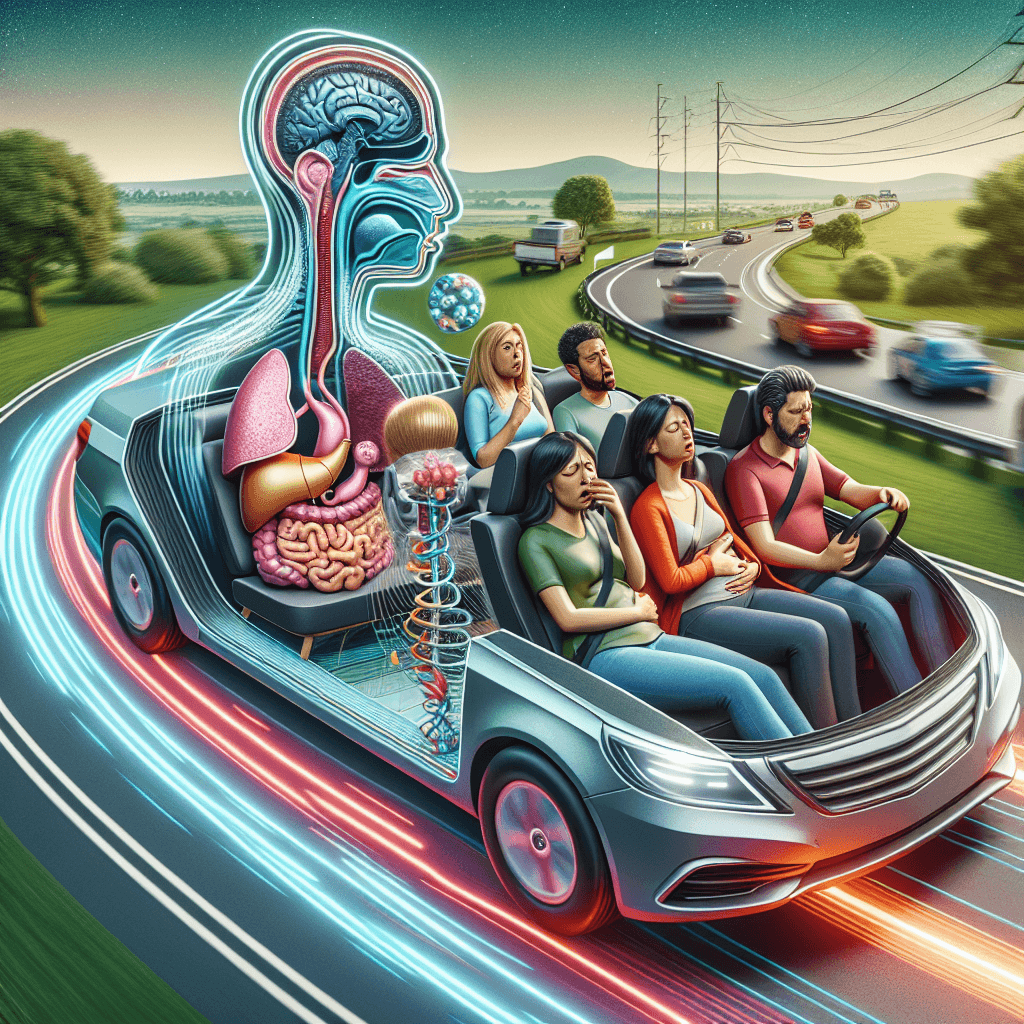Why does a moving car make you sick even if you are sitting perfectly still
That queasy feeling isn't from the car's movement, but from a bizarre sensory battle that tricks your ancient brain into thinking it's been poisoned.


Too Long; Didn't Read
TLDR: Your eyes see the inside of the car and think you are still, but your inner ear feels the motion. This sensory conflict confuses your brain, which interprets the mismatch as a sign of being poisoned and makes you feel sick to protect you.
Motion Sickness Explained: Why Does a Moving Car Make You Sick Even if You Are Sitting Perfectly Still?
We’ve all been there. You’re settled in for a long road trip, maybe in the backseat, trying to read a book or scroll through your phone. You are sitting perfectly still, yet a familiar, unwelcome wave of queasiness begins to build. Your head feels light, a cold sweat breaks out, and suddenly, you have an urgent need for fresh air. This is motion sickness, a common yet perplexing phenomenon that can turn an exciting journey into a miserable experience. But why does it happen? Why does your body revolt when you are seemingly doing nothing at all? The answer lies in a fascinating conflict happening deep within your brain.
This blog post will unravel the mystery of motion sickness, exploring the sensory battle that triggers it and why your body’s ancient defense mechanisms are to blame.
The Sensory Conflict: A Mismatch in Your Brain
The most widely accepted explanation for motion sickness is the Sensory Conflict Theory. At its core, this theory states that motion sickness is the result of your brain receiving contradictory information from your different senses, primarily your eyes and your inner ear's vestibular system.
Imagine you're a passenger in a car, looking down at your phone.
- Your Eyes Report: "Everything is stable. The phone is still, the seat is still. We are not moving."
- Your Inner Ear Reports: "Hold on! I feel acceleration, turns, bumps, and deceleration. We are absolutely in motion!"
Your brain, the central command center, receives these two completely different stories. It can't make sense of the conflicting data. Is the body moving or is it stationary? This confusion creates a neurological mismatch, which the brain interprets as a serious problem—a potential sign of malfunction.
Your Inner Compass: The Vestibular System
To understand this conflict, it’s crucial to know about your vestibular system. Located in your inner ear, this intricate network of canals and sacs acts as your body's gyroscope and accelerometer. It’s responsible for your sense of balance and spatial orientation.
When the car moves, the fluid within these inner ear canals sloshes around, sending signals to your brain about every turn, acceleration, and bump in the road. This system is incredibly sensitive and provides a constant, real-time feed of your body's motion. While your eyes are locked onto a non-moving object inside the car, your vestibular system is correctly telling your brain that the world is, in fact, whizzing by. This is the source of the sensory battle.
The "Poison" Hypothesis: An Ancient Survival Instinct
So, why does this sensory confusion lead to nausea and vomiting? The leading theory points to an ancient, hardwired survival mechanism. From an evolutionary perspective, the only time our ancestors would have experienced a similar sensory disconnect was if they had ingested a neurotoxin—a poison from a dangerous plant or spoiled food.
When poisoned, a person's sensory and motor functions can become disoriented, creating a mismatch similar to the one experienced during motion sickness. The brain, having evolved over millennia to protect the body, interprets this modern-day sensory conflict as a sign of poisoning. It triggers its most reliable defense mechanism to expel the perceived toxin: it makes you feel nauseous and want to vomit.
In essence, your body isn't trying to ruin your trip; it's trying to save your life from a threat that doesn’t actually exist. The dizziness, cold sweats, and nausea are all symptoms of this ancient poison-response system kicking into high gear.
How to Help Your Brain Sync Up
Fortunately, understanding the cause of motion sickness provides clear strategies to combat it:
- Look Out the Window: Focus your eyes on a stable point on the horizon. This allows your eyes to see the same motion that your inner ear is feeling, helping to resolve the sensory conflict.
- Sit in the Front: As a front-seat passenger or driver, you have a clear view of the road ahead, which helps your brain anticipate movements and sync up your senses.
- Avoid Reading or Screens: Looking at a stationary object up close is the fastest way to create a sensory mismatch.
- Let in Fresh Air: Cool air can help alleviate feelings of nausea.
- Try Natural Remedies: Ginger is well-known for its anti-nausea properties. Acupressure wristbands are also a popular choice for many sufferers.
Conclusion
The unsettling feeling of car sickness isn't a sign of weakness but rather a demonstration of your body's incredibly sophisticated, albeit sometimes misguided, protective instincts. It's a direct result of a communication breakdown between your eyes and your inner ear, which tricks your brain into thinking it needs to defend itself from a non-existent poison. By understanding this sensory conflict, you can take simple, effective steps to help your brain reconcile the mixed signals. So the next time you feel that queasy sensation, remember it's just your brain’s ancient programming doing its job, and you now have the knowledge to help it see the bigger picture—preferably, one that’s fixed on the horizon.


